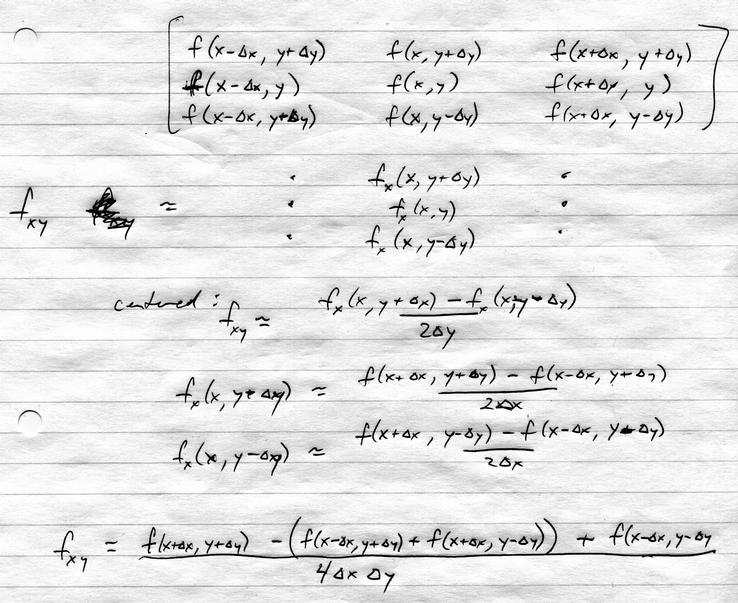A look at discrete approaches to partials
The partials can be understood in a rough way by looking at the coefficients used to multiply the various neighbors of a point. I call these "masks".
We imagine that each of the nine cells are occupied with data values, and so the numbers you see are coefficients multiplying them (with empty cells being zeros -- in other words, those data values aren't used).
In all cases below, I'm using "centered differences" to compute derivatives: from univariate calculus,
f'(x) is approximately (f(x+h)-f(x-h))/(2h).
|
fy(x0,y0) =
(
f(x0,y0+h)
-
f(x0,y0-h)
)/(2h)
|
|
|
fx(x0,y0) =
(
f(x0+h,y0)
-
f(x0-h,y0)
)/(2h)
|
|
The following image (sorry it's so sloppy!) shows the calculations one
would do to compute fxy:
 If we carry out the same process to compute fyx, we would find exactly the same answer. This is a way of appreciating Clairaut's theorem, and the sense of the mixed partials.
If we carry out the same process to compute fyx, we would find exactly the same answer. This is a way of appreciating Clairaut's theorem, and the sense of the mixed partials.
Website maintained by Andy Long.
Comments appreciated.

